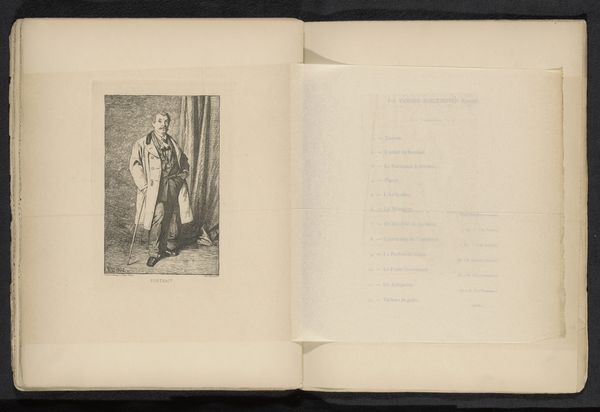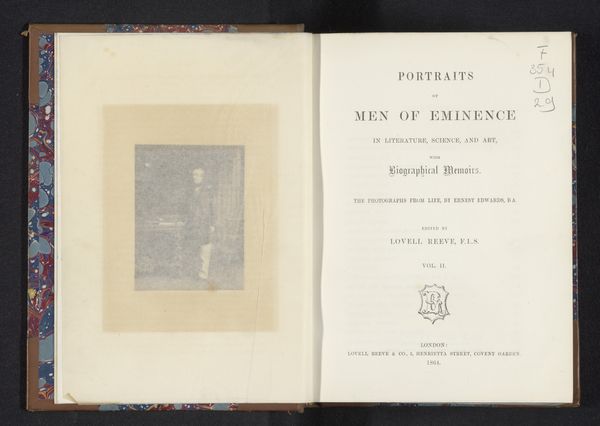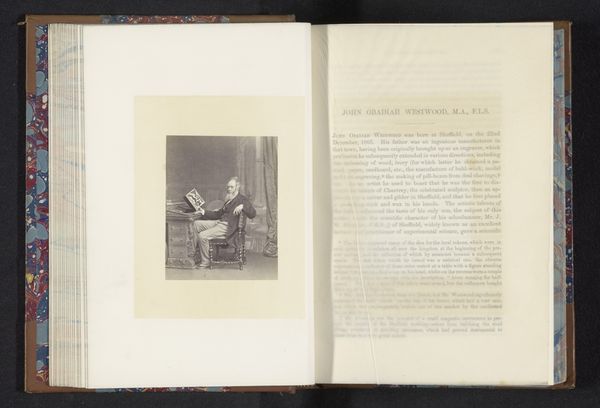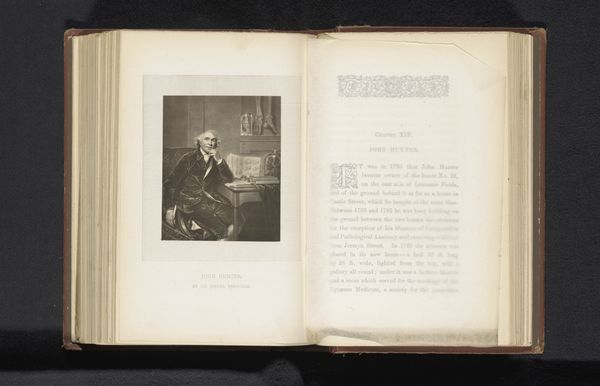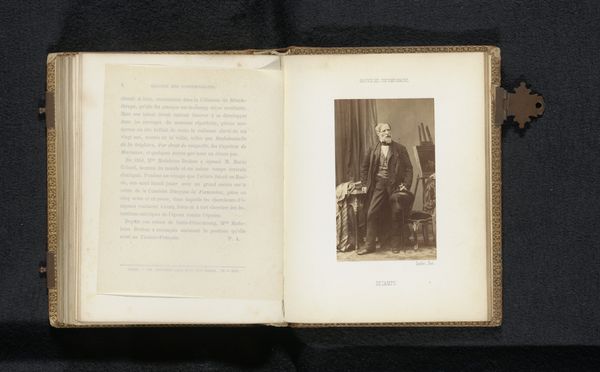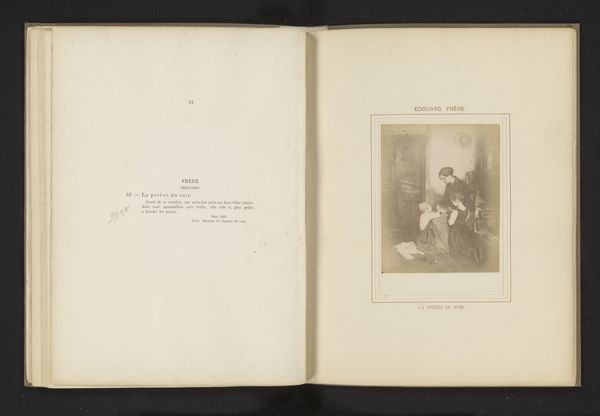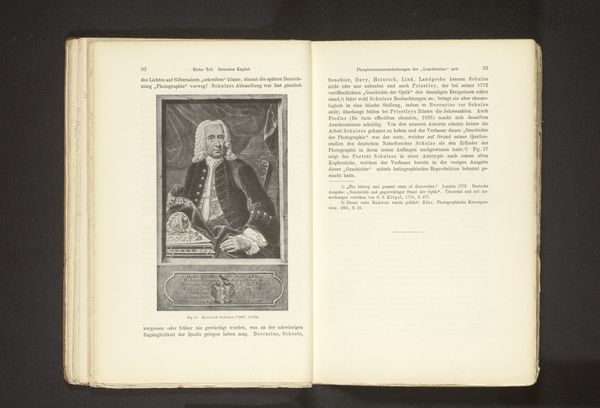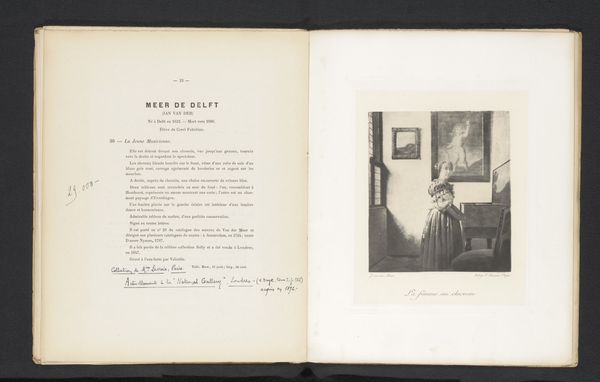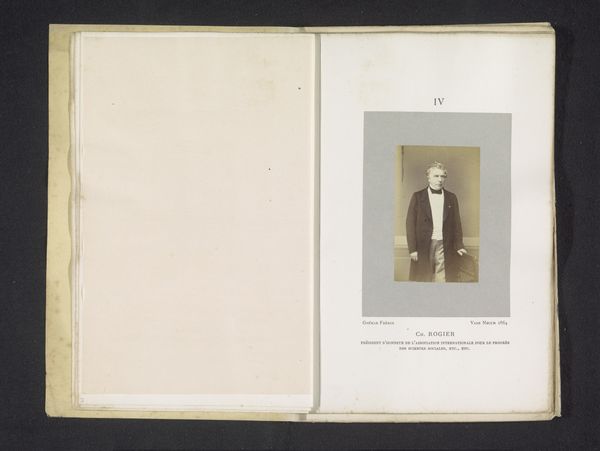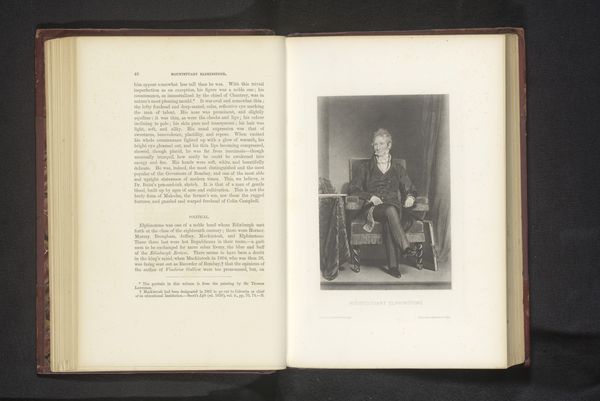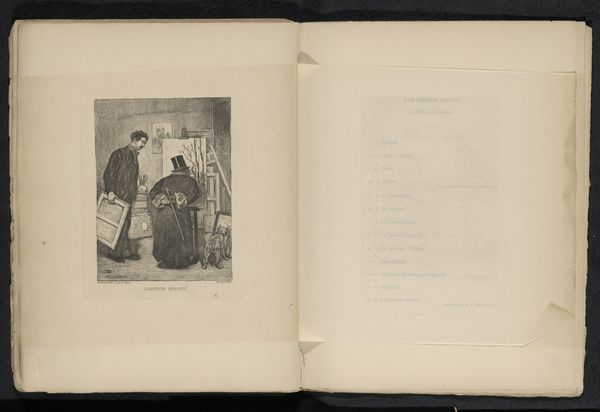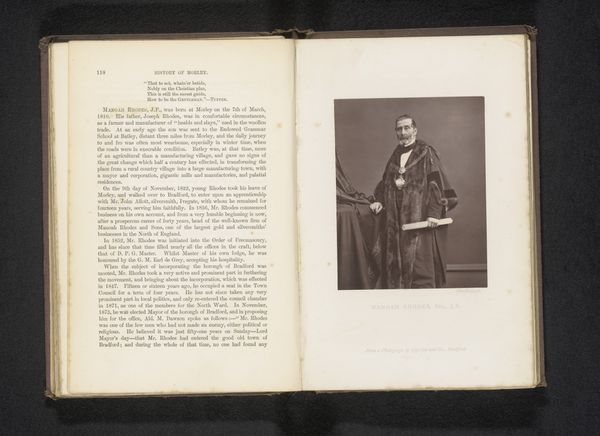
print, photography, gelatin-silver-print
#
portrait
#
still-life-photography
# print
#
photography
#
gelatin-silver-print
Dimensions: height 86 mm, width 65 mm
Copyright: Rijks Museum: Open Domain
Curator: Here we have a gelatin silver print, tentatively titled "Portret van vermoedelijk Philip Stanhope," attributed to Ernest Edwards, dating from before 1867. Editor: The muted sepia tones give it such a formal, almost severe quality, don’t you think? He seems rather stiff. It’s the strong verticality, maybe? Or just his posture. Curator: I am particularly interested in how photography functioned as a democratizing force. Consider how photographic studios arose in this era. They became spaces where the aspiring middle classes could mimic the visual codes of aristocracy, making portraiture accessible to those excluded by older forms like painting. Editor: Yes, but within these democratized spaces, there are still clearly visible hierarchies operating through sartorial codes and background elements. Observe the richly carved desk and what appear to be densely packed bookshelves. His dress. Each contribute to a carefully constructed visual narrative of class and intellectual standing. Curator: Indeed, and look at the material composition itself: the paper, the chemical processes used to create the image. The print itself—its survival and circulation—tell a story about photographic processes, labour, and economies in the 19th century, as it enabled wider distribution. Editor: I agree, although for me, the real focus falls upon the subject's gaze. His direct engagement pulls you in, doesn’t it? The contrast between the blurred background and the sharpness of his face compels attention, guiding my reading through its careful arrangement of form. Curator: Consider also the implied labor behind the desk’s intricate design, indicative of skilled craftsmanship, and what that signifies for the subject. A suggestion of a link, a social contract of sorts. How we receive images depends heavily on these subtle cues. Editor: From a formalist perspective, it is quite beautiful, despite the severe mood we mentioned. The symmetry, the lines—they construct something timeless. It provokes the question, beyond mere portraiture, what is he truly trying to convey to the viewer? Curator: So, from the accessibility of photographic printmaking to the staging of Victorian society, context helps to flesh out this fascinating man and the history around him. Editor: And by observing the portrait closely, we feel the force of form, too, creating impact on the eye, leading to questions and drawing the gaze.
Comments
No comments
Be the first to comment and join the conversation on the ultimate creative platform.
